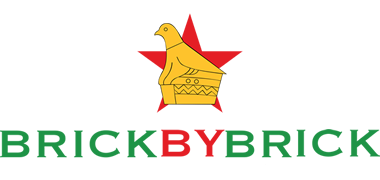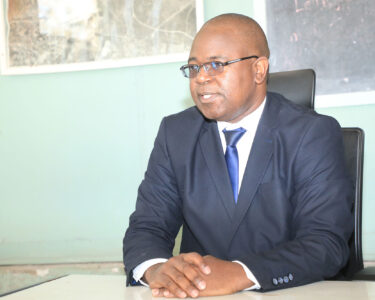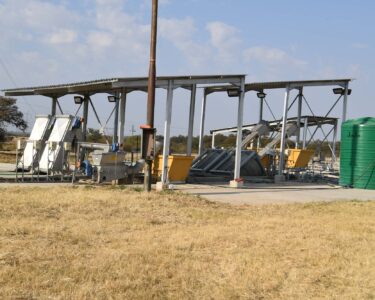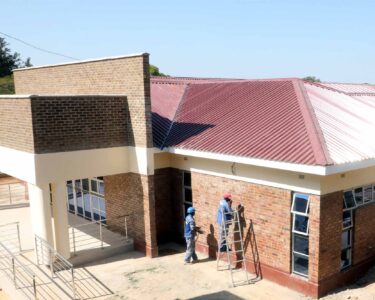… The support of the Second Republic is making Bindura University even busier
The Bindura University of Science Education (BUSE) has been busy using the support offered by the Second Republic to come out with innovation upon innovation whose impact on national life is expected to be huge. Here, we cover some of the innovations to have come from BUSE in recent years and months.
In addition to the landmark innovations covered in earlier articles in this issue, the other innovations that have come from the Bindura University of Science Education (BUSE) in recent years and months, includes a mobile web application called SMART Connect, that links smallholder farmers to lucrative markets.
The app was developed upon the realisation that most smallholder farmers cannot reach well-paid markets due to the lack of information and transport. As a result, SMART Connect offers a unique platform for linking smallholder farmers with buyers, transporters, and other agribusiness entities.
Under this app, smallholder farmers are organised into commodity groups to facilitate bulk transportation of their produce and to meet the quantities required by the market. They are also assisted to produce quality products, grade them, and package them properly to meet buyers’ needs.
Research shows that the availability of market information through other e-marketing platforms have made smallholder farmers more vulnerable to opportunistic behaviour of speculators rather than improving their socio-economic fortunes.
Therefore, SMART Connect is concentrating much on addressing the challenges faced by communal farmers, which are not addressed by existing platforms such as eMkambo and Eco-farmer.
Thus, under SMART Connect, farmers are encouraged to upload photos of their produce on offer, quantity, price, and location. This allows buyers to search for the products, price range, quantity and location. Transporters also view the location of both the farmer and buyer, and a distance calculator computes the distance and transport cost.
Other agribusiness actors, such as inputs suppliers and financial service providers also upload their adverts on the platform for farmers to view them.
To counter the problem of internet connectivity in remote areas, SMART Connect is complemented with an SMS facility and call centre. The platform is therefore providing valuable help to communal farmers to get high returns from their investments as they leapfrog the speculators who often exploit them.
When it is finally rolled out, SMART Connect hopes to market at least 50,000 smallholder farmers’ produce valued at more than US$10m in its first year of operation.
In 2018, BUSE’s SMART Connect team won the RuForum Young Africa Innovation Award, because of its potential to improve the livelihoods of smallholder farmers and transform the agricultural sector through digital technology.
E-parcels system
BUSE has also developed an ICT solution to manage the movement of parcels in the country in partnership with ZIMPOST and ZUPCO. It bridges the gap between official courier services and bus driver postal systems informally known as “kuisa pa bhazi”.
BUSE’s e-parcel system allows ZIMPOST to handle parcel delivery through the ZUPCO transport system to deliver parcels timely and safely, as it provides a facility for clients to create delivery requests and track their orders in transit.
The system facilitates last mile collection and delivery – where a client decides if the parcel should be delivered to the doorstep of the recipient or is collected at the Post Office or at a ZUPCO bus stop.
Parcels on ZUPCO buses are handled and accompanied by a ZIMPOST escort who oversees the process of accepting parcels, processes payments, and hands parcels to their intended recipients.
The system has been developed to ZIMPOST’s specifications and has passed a user-acceptance test. It has been deployed on the Harare-Bulawayo route in a validation exercise running for a limited time.
The system hopes to replace ZIMPOST’s urge to acquire a foreign Enterprise Resource Planning System where it will be paying huge subscriptions annually. BUSE’s system, if adopted, will therefore save foreign currency for the nation.
Masawu juice and yoghurts
BUSE has also partnered with the National Biotechnology Authority of Zimbabwe to implement a masawu value addition project in the Muzarabani District, under which the commercialisation of masawu-based juices, vitamin C, and yoghurt will be implemented.
Masawu is a good source of nutrients as it is rich in carbohydrates, fibre, protein, calcium, potassium, vitamin C and other essential vitamins and minerals, including iron, phosphorus and zinc.
According to scientists, compared with other fruits, masawu is also richer in P, Ca, and vitamin C than apples, and contains more P, Fe, vitamin C, calorific value and carbohydrates than oranges.
The high nutritional value of masawu makes it an important food source for communities in the Zambezi Valley floodplains where the plant is native and abundant.
Already a 5-hectare land has been acquired at Muzarabani and the construction of an industrial plant to add value to masawu has begun. Locally, on the campus of BUSE, over 2,000 bottles of masawu juice have been sold in a pilot phase of the project.
In 2021, the global fruit juice market hit a US$141 billion value, and is expected to reach US$182 billion by 2027. This increase is driven by the fact that soft drinks, such as colas and flavoured sodas, are becoming less popular due to their high sugar content, artificial colouring and sweetners, phosphoric acid, caffeine, and preservatives, all of which have harmful effects on the human body.
As a result, many people are switching from fizzy drinks to natural fruit beverages. This is where masawu juice comes into its own. Interestingly, most of the fruit beverages on the Zimbabwean market are from apples, oranges and grapes which are less nutritious than some indigenous fruits such as masawu.
BUSE estimates the yearly income from the masawu juice project at US$1,702,400, and a total operational expenditure of US$716,000.
Vehicle number plates
BUSE is also part of a consortium of six Zimbabwean universities that have banded together to produce digital number plates for vehicles to cut down on the cost of acquiring number plates and also to eliminate number plate shortages in the country.
The other universities in the consortium are: The University of Zimbabwe (which is hosting the project), Chinhoyi University of Technology, Midllands State University, Harare Institute of Technology, and the National University of Science and Technology,
The universities formed the National Transtech Solutions (Pvt) Ltd to run the number plate production business, which was commissioned by President Emmerson Mnangagwa in July 2021. “The plant is a breakthrough that will enable the local production of digital number plates at competitive cost,” the President said when commissioning the US$1m project.
Implemented by the Ministry of Transport and Infrastructural Development in conjunction with the Ministry of Higher and Tertiary Education, Innovation, Science and Technology Development, the project became necessary because Zimbabwe had had a backlog of number plates for a long time. Traditionally the number plates had been imported from Germany at an annual bill amounting to US$800,000.
This compelled the six universities to come together to produce the number plates with better material than the imported variant and also bring down the cost of acquiring them by motorists.
“At some point, number plates were costing about US$100 each,” explains BUSE’s Vice Chancellor Prof Eddie Mwenje. “But we, the universities, have figured it out that you can get it probably for US$20. So a company has been set up by the six universities and is producing number plates at UZ.
“Our part in it, as BUSE, is providing the ICT backup, that’s our role. The ICT aspect is that when a vehicle gets to a tollgate, there will be cameras that read the number plate and the information will be linked to the motorists’ money wallet on their phones, from where the system will extract money to pay the tollgate charges, so motorists will not need to do anything, they just pass through.
“The beauty about this project is that it will be easy for motorists to get number plates because people used to wait for a long period to get them. It was coming from Germany. And secondly, the price was just too high. Now with the universities taking the aspect of manufacturing locally and also doing the technology and modernising the system, that makes it exciting.”
CAPTIONS
Pic 1:
Among the landmark innovations to come from BUSE is a first-class eye examination and treatment solution offered at the University’s Optometry Clinic
Pic 2:
BUSE has developed an ICT solution to manage the movement of parcels in the country in partnership with ZIMPOST and ZUPCO.
Pic 3:
Zupco buses will play a key role in the BUSE-developed e-parcel system, alongside ZIMPOST








